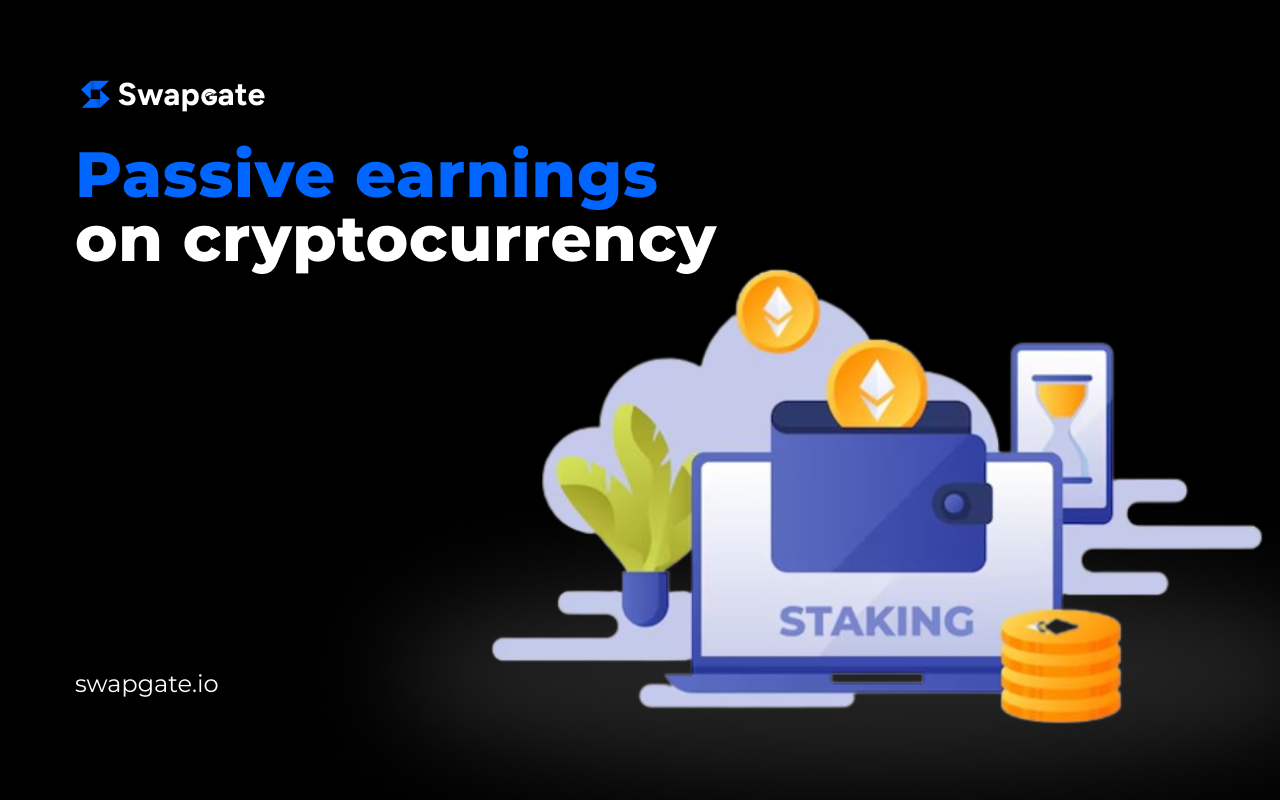
In recent years, the crypto market has undergone significant changes. More and more people are interested not only in buying or selling cryptocurrency but also in generating passive income from it. Among the most popular methods are staking and farming in the DeFi sector. In this article, we will explore how to use cryptocurrency for passive income and dive into what staking and farming are all about.
Passive Income from Staking and Farming
Passive income in cryptocurrency is not much different from its traditional concept, as it essentially refers to earning profits without active participation. In the crypto industry, several methods allow investors to receive regular payments by simply holding their assets. The advantage is that your capital continues to grow while you hold your assets in specific projects or protocols.
The main ways to use cryptocurrency for passive income are through staking and farming, both of which operate within the DeFi (Decentralized Finance) framework. These methods allow investors to participate in the ecosystem, receive rewards, and simultaneously support blockchain networks or DeFi protocols.
How Staking Works
Staking is the process of locking up cryptocurrency to support the operation of a blockchain based on the Proof of Stake (PoS) algorithm. Unlike traditional mining, staking requires users to freeze their cryptocurrency in the network for a certain period. In exchange, they receive rewards in the form of new tokens.
The main advantage of staking is its simplicity. Users do not need to buy expensive equipment, as with mining. Instead, they can simply hold their cryptocurrency in a staking smart contract. The income earned depends on the amount of staked tokens, the duration of the staking period, and the cryptocurrency’s inflation rate.
Benefits of Staking
- Passive Income: Users receive regular rewards, usually in staking tokens.
- Ecosystem Participation: Staking helps maintain blockchain operations and validate transactions.
- Low Entry Barrier: No expensive equipment is required, making staking accessible to almost any user.
What is Farming?
Farming, or yield farming, is a more complex but highly profitable method of generating passive income. It involves providing liquidity to various protocols in the DeFi sector in exchange for rewards. Yield farming requires active participation in liquidity pools, where users lend their assets to DeFi protocols, which then use them for loans, trades, or other operations.
Farmers are rewarded in the form of commissions or new tokens for providing liquidity. The rewards depend on the amount of liquidity provided and the activity level on the platform.
Benefits of Farming
- High Returns: Yield farming can offer more profits than traditional passive income methods.
- Decentralization: DeFi protocols allow users to retain full control over their assets.
- Diverse Opportunities: There are many DeFi platforms offering farming, allowing for risk diversification and income generation.
Staking vs. Farming: What’s the Difference?
While both methods aim to generate passive income from cryptocurrency, they differ in several key aspects. Staking is generally less risky and easier to perform. You simply need to choose the right blockchain, offer your cryptocurrency, and wait for the rewards.
Farming, on the other hand, carries a higher risk because the income depends on market activity and liquidity demand. However, when done correctly, farming can yield significantly higher profits than staking.
Risks and Challenges
Despite the advantages, both staking and farming come with certain risks. The main risk of staking is the potential decline in cryptocurrency value. If the token price drops sharply, your rewards may not be enough to cover the losses.
Farming is subject to volatility and impermanent loss, where the value of assets in the liquidity pool fluctuates, and farmers can lose part of their investments due to market price changes.
How to Start Earning with Staking and Farming
To start earning from staking, simply choose a cryptocurrency that supports staking, such as Ethereum, Cardano, or Solana, and stake your tokens in the respective protocol. For farming, select a DeFi platform, such as Uniswap, PancakeSwap, or Aave, and provide liquidity to one of the pools.
Conclusion
Using cryptocurrency for passive income through staking and farming opens new opportunities for earning and participating in decentralized finance. Each method has its own features, benefits, and risks, so it’s essential to carefully research all aspects before investing.
In 2024, the DeFi space continues to evolve, offering users more innovative solutions to generate income from their cryptocurrency assets.